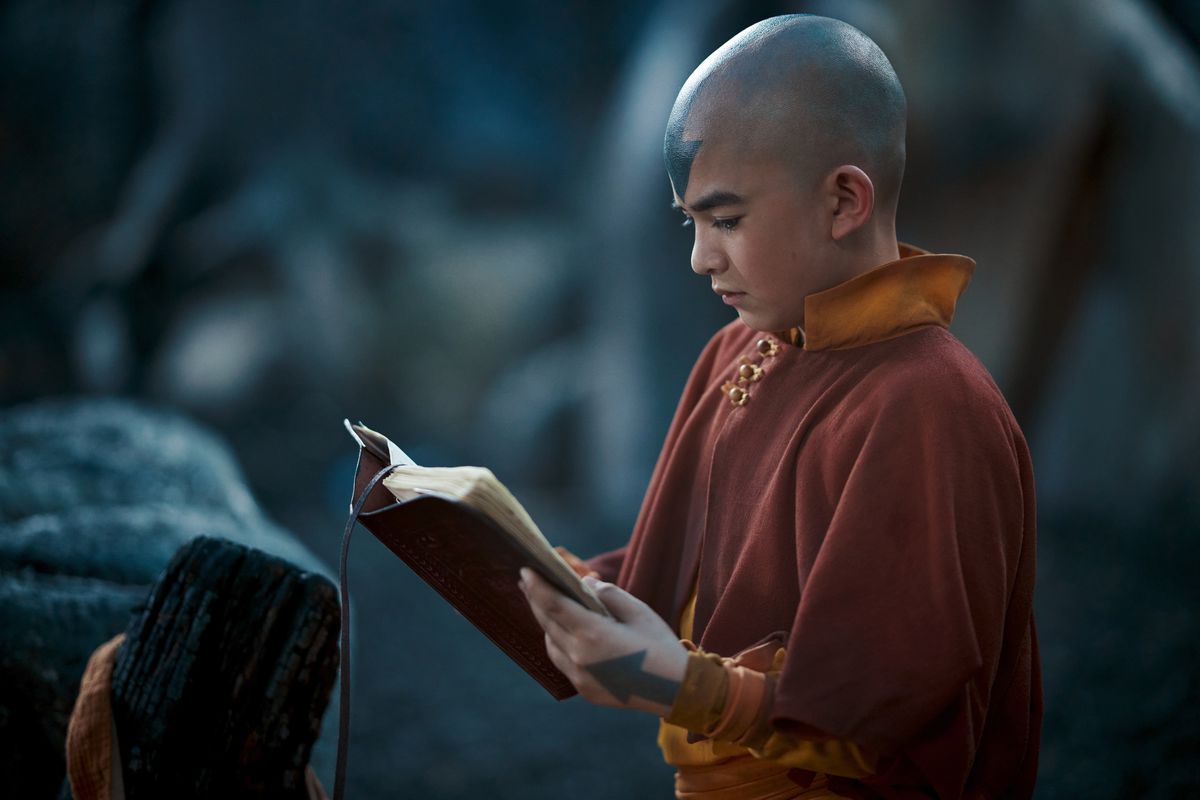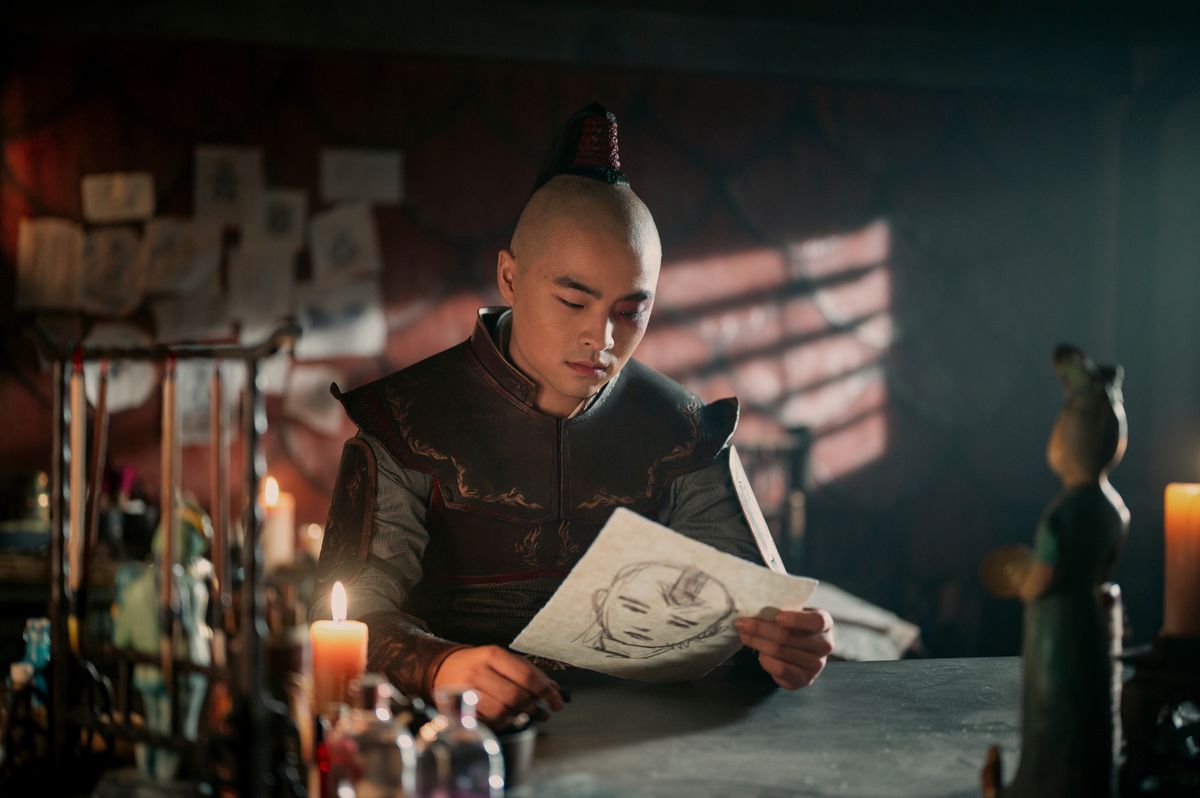Netflix’s Avatar: The Last Airbender speedruns the whole first season of the animated show in eight episodes, which means cutting some scenes, patching other episodes together, and adding a whole new prologue. Results may vary: On the one hand, integrating some favorite characters earlier on makes for some fun reveals, but also makes for some weird pacing and exposition delivery.
The biggest and most glaring drawback, though, is that the rushed pace really buries some good character development and doesn’t let the young actors shine. And the thing is, we know that the young actors — particularly Dallas Liu and Gordon Cormier, who play Zuko and Aang — have a good grasp of their characters based on one really good scene that the show did add. It’s a glimmer of what could be, and hopefully an indication of where the show could go.
[Ed. note: This post contains spoilers for Netflix’s Avatar: The Last Airbender and the original animated series.]
Image: Netflix
It happens in the sixth episode, “Masks,” which follows some of the plotline from “The Blue Spirit” in the original (but in Netflix ATLA fashion, adds in a few extra plotlines from the first season). But one crucial plot point remains the same: While masked, Zuko rescues Aang from Commander Zhao’s clutches.
The Netflix version, though, adds an additional scene between the two of them as they hide out from Zhao and his troops. Aang asks Zuko about the calligraphy brush that he uses; in this version of the story, he’s stolen Zuko’s carefully kept notes about the Avatar and is impressed with Zuko’s penmanship. This sparks a conversation about their childhoods, and it’s generally a lovely little pocket of character development and a chance to see the actors actually deliver on what makes their characters so dang compelling.
The Netflix Aang is sanded off. Gone is his adventurous spirit and his playful nature. Instead, the writers want to pile on the guilt he feels. We’re reminded at every moment that Aang disappeared when the world needed him most, people are incredibly pissed off by this, and Aang constantly struggles with some greater Chosen One destiny. All he really does is get yelled at and say he’s going to do better.

Photo: Robert Falconer/Netflix
But then there are moments like the scene with Zuko where glimmers of Aang’s true character shine. And Cormier delivers. He delivers every line, actually, with Aang’s wide-eyed love for the world. It’s just that the writers seem more interested in augmenting the burden he bears.
As Zuko, however, Liu has more room to flex. Liu nails the balance between the angst Zuko feels because he’s been banished by the father who he struggles to please but never will — and the angst that comes generally with being a moody 16-year-old. Yes, he’s an angsty, tortured antihero; but he’s also a bit of a perfectionist nerd who wants to do everything the right way. In this scene in particular, we get to see that other side of Zuko, the one who wanted to excel at his penmanship lessons and takes great care in assembling his notebook to track down the Avatar.

Photo: Robert Falconer/Netflix
The Netflix Avatar goes out of its way to make sure that every last fan-favorite character, set piece, and plot point is included in the first season. But the showrunners prioritize that running checklist over the actual character moments that grounded the original. A lot of these moments get sawed off, just to stick in another cool plot point that doesn’t really serve the same purpose.
The strongest part of Netflix’s Avatar is when the young cast get this sort of chance to really bring these characters to life. Unfortunately, a lot of what makes their characters so magnetic is shaved off for efficiency’s sake (or in the case of Sokka, to fix a problem that never really existed). But these gems are there, buried beneath the frenzied rubble. Should the show get a second season, it could be a chance to dust off these strong moments of character development and interaction — and actually highlight what makes the characters so iconic and worth visiting again.
